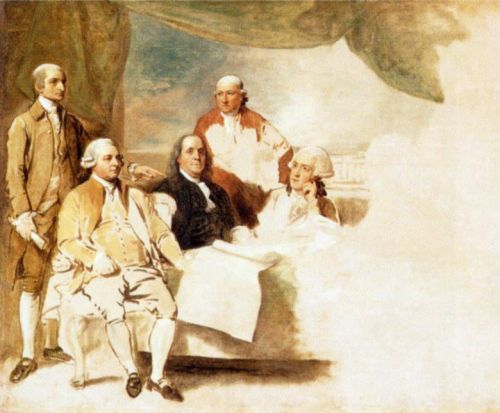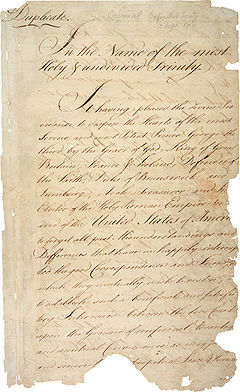The Treaty of Paris was signed on September 3, 1783, and it was ratified by congress on January 14, 1784. It marked the end of the American Revolutionary war. It would only be brought back to life by history books, stories, and other accounts of the events which so violently took place.
After eight years of bloodshed and sorrow; eight years of devastation and loss; after many had died and seen loved ones fall, it was finally over. To be lost in memory and haunted dreams.
On that cloudy day the British, represented by Richard Oswald and Henry Strachey, met with the Americans, represented by John Adams, Benjamin Franklin, John Jay, and Henry Laurens. That day they signed a treaty of peace. The Americans were finally free. They could make their own rule, they could be their own people. The violence and bloodshed was over.
A painting was to be done of the signing, but when asked to pose for the picture, the British refused. They were too proud to have their faces on the painting of what amounted to a defeat. The painting to this day is incomplete.

Treaty of Paris by B. West, unfinished because the British party refused to pose for the portrait. | Public domain image, courtesy of Wikimedia Commons
Provisions of the Treaty of Paris
The Treaty of Paris consisted primarily of ten articles. These were:

- The king acknowledged the United States to be free, sovereign and and independent states. He promised to treat them as such and that his heirs would treat them as such as well.
- To prevent future dispute about where is America and what belongs to the British, boundaries were marked, set, and described in the treaty.
- It is agreed that the United States citizens may fish in the seas where they please, for whatever kind of fish they please, in British and United States territory.
- Neither Britain nor the United States would do anything to prevent the collection of debt by lawful creditors in either country.
- British subjects and loyalists who had property confiscated during the war would have it returned or be reimbursed for it.
- No one would be persecuted or suffer anymore loss due to the war or the side he had chosen. Any currently in prison over such charges would be immediately released.
- All prisoners of war on both sides were to be released. The king promised to withdraw all his armies from America without taking anything from the American citizens. and all property taken during the war would be returned.
- The navigation of the Mississippi river would be free to both the British and the Americans “for ever.”
- If any land were taken by the British or the Americans before the treaty reached the United States, such holdings would be returned without problem and without compensation.
- Both parties promised to ratify the treaty within six months, or sooner if possible.


